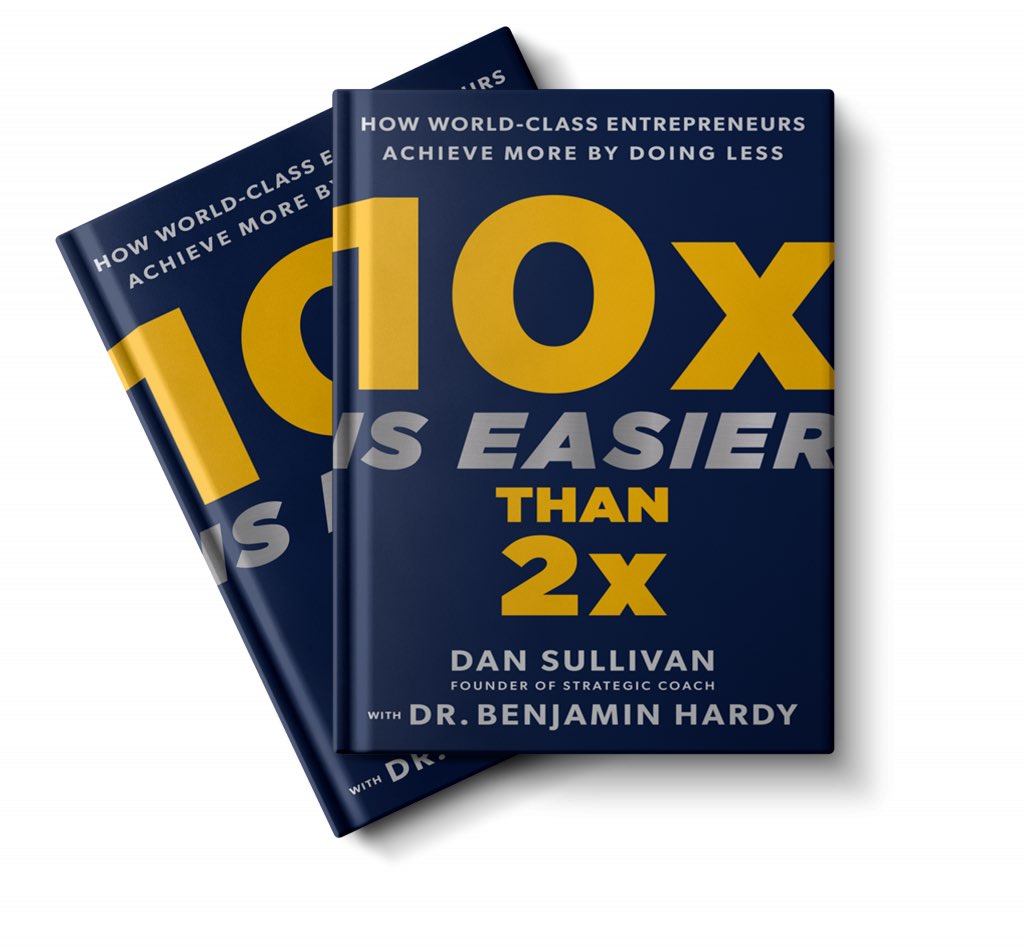10x Is Easier Than 2x
08 Jun 2023Our 10x performance journey begins with the rise of Michelangelo.
At the age of 17, Michelangelo was an unknown artist obsessed with sculpting the human form as accurately as possible. To teach himself anatomy, he found and dissected dozens of human corpses. He literally risked his life to gain this knowledge; if the authorities had caught him “violating a corpse” he would have been put to death. Such was the law in Florence, Italy in 1493.
Thankfully, Michelangelo was never caught.
Applied Anatomy: 10x
Michelangelo’s mastery of human anatomy shows in his art, including his sculptures of Hercules and David, his painting of the Sistine Chapel, and in the works of students who sought him out as a mentor.
How did Michelangelo become such a remarkable artist? The authors of 10x is Easier Than 2x assert that he did so through the 10x process, although he would not have called it that at the time.
Reviewing the 80/20 Rule
If you’re in business, you already know the 80/20 rule, also known as the Pareto Principle. Italian economist Wilfredo Pareto observed that 80% of the land in Italy was owned by 20% of the families. The rule shows up in other large statistical samples. On most sales teams, managers observe that 80% of the sales are closed by 20% of the salespeople. And so on.
Many business leaders find that 80% of our results are due to 20% of our actions. By way of example: It’s usually more important to spend half an hour speaking face-to-face with a large client instead of spending an entire day sorting through files. The client conversation will likely lead to more revenue, while file sorting will only lead to a well-organized filing system.
Yes, the files must be maintained! But a smart business leader will focus on revenue-generating tasks (like speaking with clients) and hire a team to manage the files.
To achieve 10x, we focus on the 20% (producing 80% of the results) and we delegate or partner with people who can do the rest.
2x is Typical, 10x is Exponential
To achieve a 2x improvement in performance, most of us can just keep doing what we’re already doing. Over time, we’ll get better simply by doing the same thing repeatedly. Consider 10,000 Hours of Practice.
But to achieve a 10x improvement, we must be mindful about the choices we make. To improve by a factor of ten, we need to focus on the 20% of our work at the intersection of excellence and passion. At the same time, we need to move away from the 80% of our tasks that can be better performed by someone else.
The best business partnerships are those where each partner is focused on their own 20% with little or no overlap with their partner’s 20%, and each partner’s 80% is handled by other members of the team (including other partners).
We know Michelangelo today because he chose 10x, even though he probably didn’t call it that. The authors site several examples of Michelangelo’s 10x activities:
- Risking his life by learning anatomy from real human corpses, even though this activity was punishable by death.
- Spending his entire savings on a block of marble because it happened to be suitable for his next project. The result: Hercules.
- Accepting commissions from wealthy patrons before he was entirely ready to perform the work, knowing that he had the determination and discipline to prepare himself in time for completion.
How To Implement 10x in Our Lives
Now that we understand the benefits of 10x, how do we implement it in our lives?
Here’s the secret: It’s not enough to focus on the 20% one time. After we’ve chosen the 20% of tasks that need our attention, and once we’ve mastered that 20%, it’s time to implement the rule all over again. Begin focusing on 20% of the 20% (you already know what to do with the “new” 80%).
The book contains examples of business leaders who achieve amazing results simply by implementing the 10x formula in a disciplined and consistent fashion.
Getting Help With the 80%
To make the process work, we need help from others who can implement the 80%. Sullivan and Hardy offer ideas on recruiting and retaining colleagues who can implement the 80% in two of their other books: Who Not How and The Gap and the Gain.
Why is 10x Easier Than 2x?
It seems counterintuitive, but the authors make a good case regarding why 10x is easier than 2x.
It’s easier because each time we make a 10x leap, we are moving further into our area of giftedness. We spend more time doing the work we were born to do. The further we push into this niche, the less it feels like work.
Further, as we get better at collaborating with our 80% partners, we get to watch them blossom as well. An 80% task for us will fall into another person’s 20%, and vice-versa.
Collaboration in the spirit of 10x is a powerful path to travel.
Conclusion
10x is Easier Than 2x is a book that I will reference repeatedly over the years, in the same way that I re-read other books by this pair of authors. Highly recommended.
For more info, check out 10xeasierbook.com.




